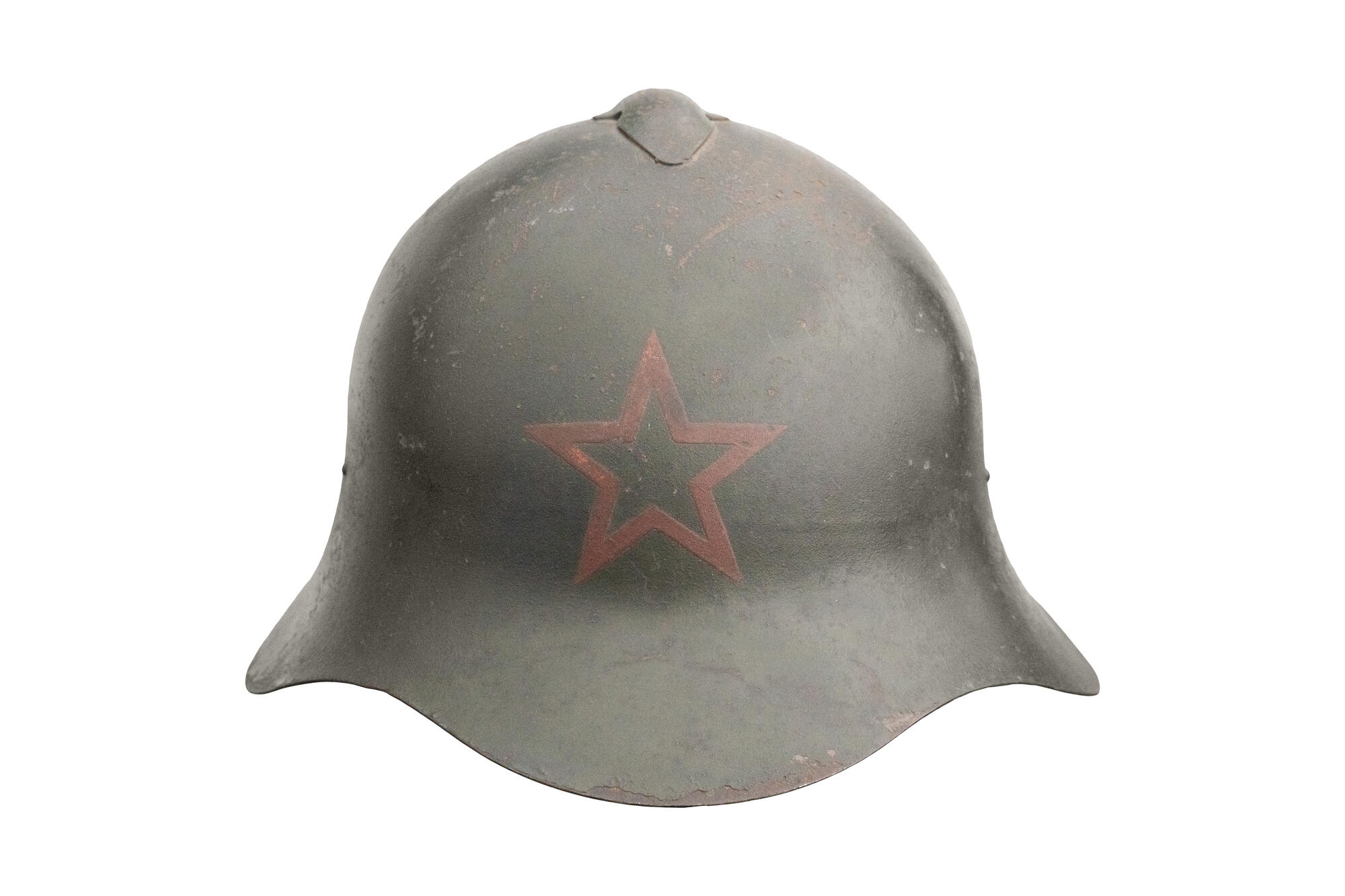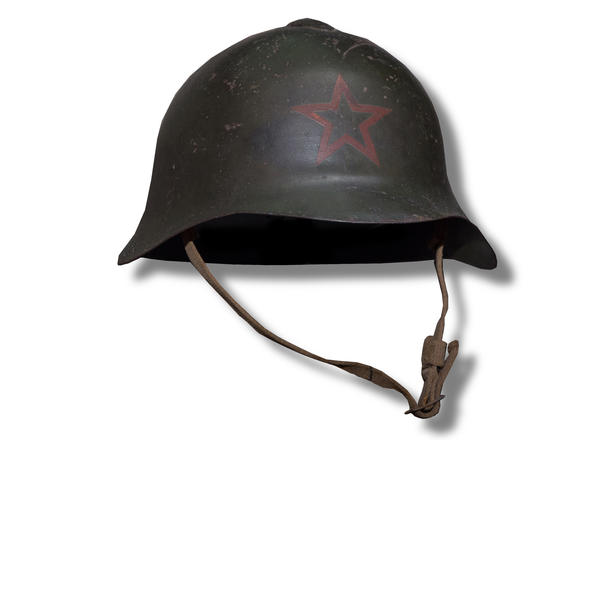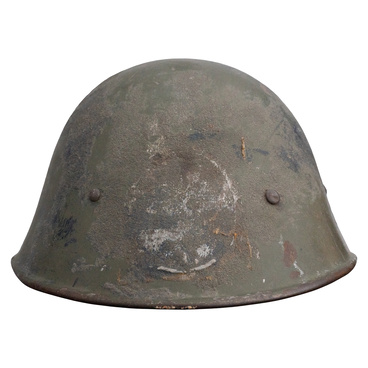The exhibition of the Victory Museum includes a steel helmet. It was used by the Red Army soldiers during the Great Patriotic War.
In the 20th century, a steel helmet became an essential element of the personal armor. The experience of trench warfare in World War I demonstrated the importance of protecting the head from shrapnel and fragments. All armies adopted steel headgear.
For a long time, the Soviet army continued using the outdated helmets introduced as early as 1916. Back then, the Imperial Russian Army ordered two million helmets designed by French General Louis Auguste Adrian. However, only 340 thousand units had been delivered before the Russian Revolution. These helmets were known as M1916. They were painted in light ocher color and featured the emblem of a double-headed eagle in front.
Twenty years later, these helmets no longer satisfied the safety requirements, and the People’s Commissariat of Defense requested Soviet designers to develop a new helmet. This sensitive task was organized by Marshal of the Soviet Union Semyon Budyonny. The famous military commander made a great contribution to the helmet’s design and supervised the service trials.
The steel helmet was first used in the battle against the Japanese forces at Lake Khasan. During the Soviet-Finnish War, certain disadvantages of the helmet were revealed. For example, the wide flares made the helmet cumbersome, and the large front rim limited the field of vision, which was inconvenient for the soldiers. As a result, the SSh-36 was replaced by the new model SSh-40 with a more modern design.
In 1935, the Lysva Metallurgical Factory started manufacturing the new SSh-36 helmet designed by Lieutenant Alexander Shvartz and adopted into service in 1936. The new helmet had a recognizable dome shape with a long rim in front and flares on both sides. Its profile resembled the famous German steel helmet. The SSh-36 became the first helmet designed and launched into mass production in the Soviet Union. It was first used in combat during the Spanish Civil War by the Republicans and International Brigades.
In the 20th century, a steel helmet became an essential element of the personal armor. The experience of trench warfare in World War I demonstrated the importance of protecting the head from shrapnel and fragments. All armies adopted steel headgear.
For a long time, the Soviet army continued using the outdated helmets introduced as early as 1916. Back then, the Imperial Russian Army ordered two million helmets designed by French General Louis Auguste Adrian. However, only 340 thousand units had been delivered before the Russian Revolution. These helmets were known as M1916. They were painted in light ocher color and featured the emblem of a double-headed eagle in front.
Twenty years later, these helmets no longer satisfied the safety requirements, and the People’s Commissariat of Defense requested Soviet designers to develop a new helmet. This sensitive task was organized by Marshal of the Soviet Union Semyon Budyonny. The famous military commander made a great contribution to the helmet’s design and supervised the service trials.
The steel helmet was first used in the battle against the Japanese forces at Lake Khasan. During the Soviet-Finnish War, certain disadvantages of the helmet were revealed. For example, the wide flares made the helmet cumbersome, and the large front rim limited the field of vision, which was inconvenient for the soldiers. As a result, the SSh-36 was replaced by the new model SSh-40 with a more modern design.
In 1935, the Lysva Metallurgical Factory started manufacturing the new SSh-36 helmet designed by Lieutenant Alexander Shvartz and adopted into service in 1936. The new helmet had a recognizable dome shape with a long rim in front and flares on both sides. Its profile resembled the famous German steel helmet. The SSh-36 became the first helmet designed and launched into mass production in the Soviet Union. It was first used in combat during the Spanish Civil War by the Republicans and International Brigades.



